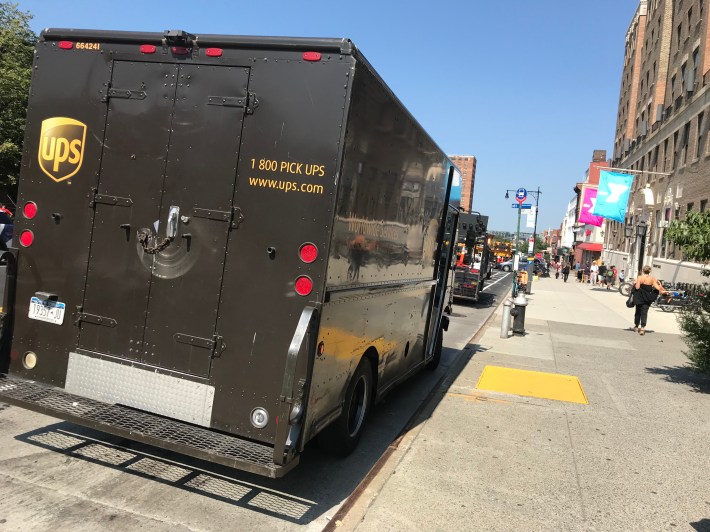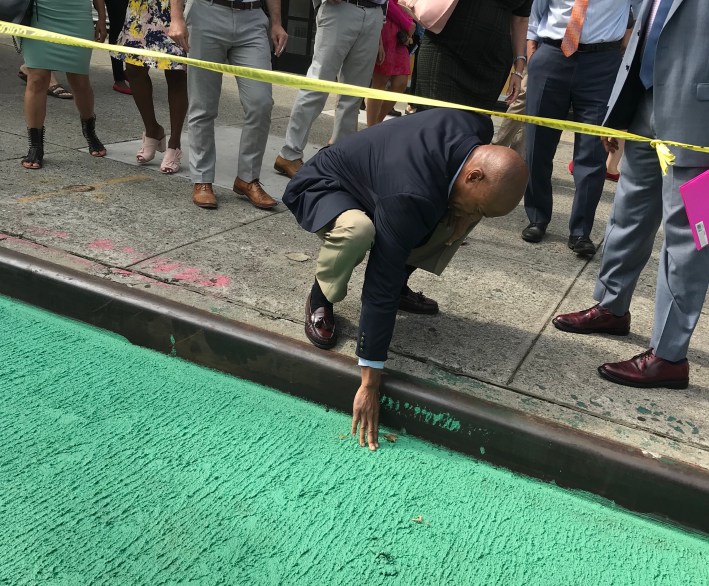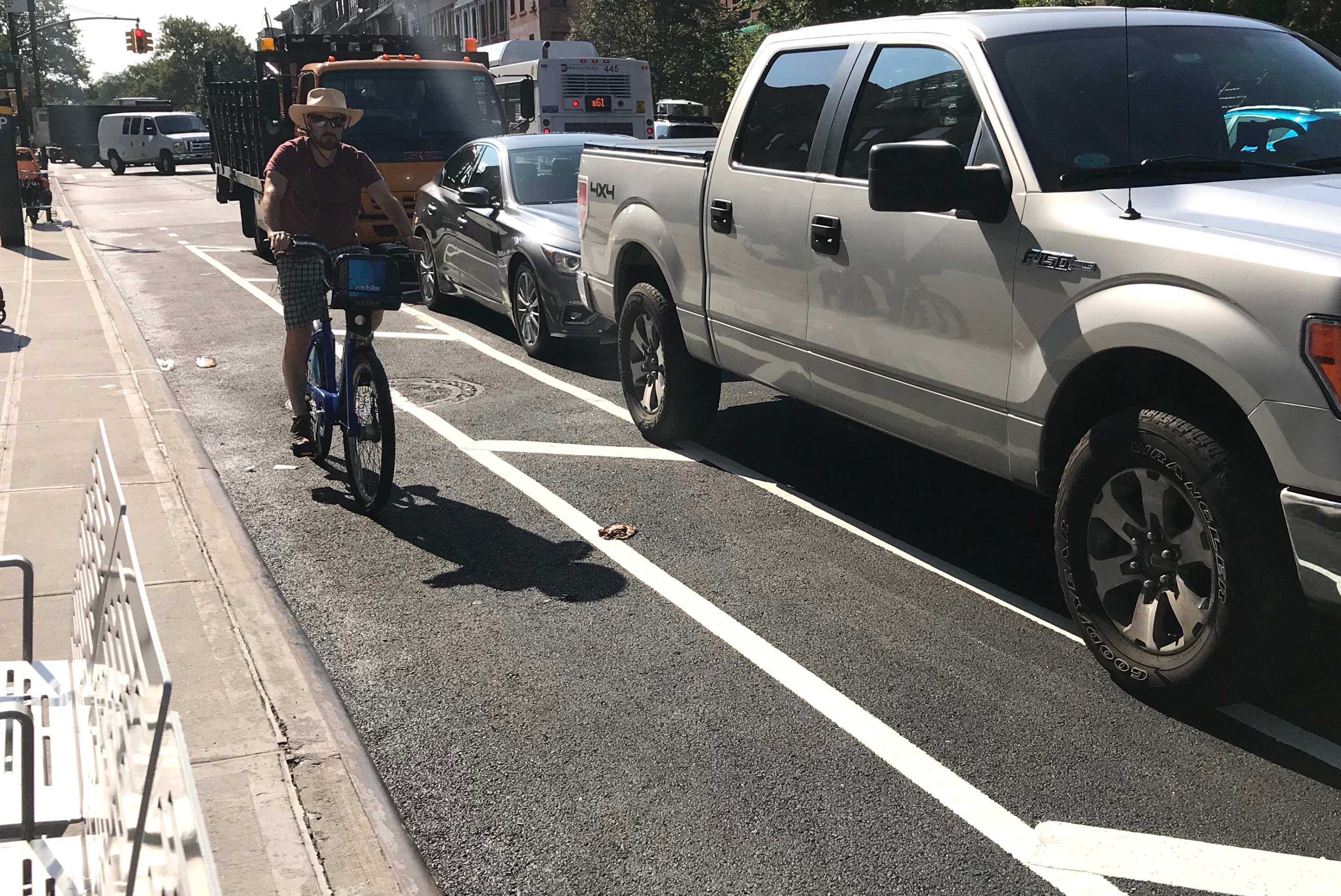No passing!
City and local officials on Thursday heralded the redesign of Ninth Street in Park Slope as green paint, new no-parking areas and pedestrian buffers are well on the way towards a mid-September completion — but cyclists won't be imagining things if they feel a little squeezed.
The new protected bike lanes on the deadly stretch between Prospect Park West and Third Avenue will be only four feet wide, with a three-foot barrier alongside parked cars, rather than the standard five-foot width.

The cozy confines will likely be an issue on both the westbound lane, which goes downhill, allowing cyclists to pick up speed, and on the eastbound side, where it will be difficult to pass cyclists struggling to go uphill.
But the Department of Transportation's Brooklyn Commissioner Keith Bray said the narrower lanes were necessary to accomplish everything the city hoped to fix.
"It's a newer design of a protected bike lane on a two-way street," he said at a press conference on Sixth Avenue, one block from where a driver struck and killed two children in March, creating the outcry that sent DOT to the drawing board.

Bray touted other safety measures — such as additional loading zones to reduce double-parking; left-turn bays to maintain car flow; additional space for pedestrians; and extra paint on corners to slow down drivers as they make right turns — that will make the roadway "safer for all users."
And that's a crucial priority on Ninth Street, where 12 people were killed or seriously injured since 2012, putting it, Bray said, in the top third of the most-dangerous stretches in Brooklyn.
But the bike lane in the redesign does not meet the five-foot minimum established by the National Association of City Transportation Officials, a national group that advocates for good urban design. And the roadway does not meet Vision Zero design standards being advocated by Transportation Alternatives and Families for Safe Streets, which call for 10- or 10.5-foot wide travel lanes for vehicles.
Ninth Street remains 11 feet wide, as it was before the death of Joshua Lew and Abigail Blumenstein under the wheels of driver Dorothy Bruns.
Both Brooklyn Borough President Eric Adams and Council Member Brad Lander (D-Park Slope) paused for a moment of silence at the intersection of Fifth Avenue and Ninth Street, where Lew and Blumenstein were killed. Adams placed a bouquet of flowers and called on New Yorkers to "transform our thinking" about the automobile culture.
"We must share our streets," he said.
For his part, Lander called on Governor Andrew Cuomo to call the State Senate back into session to vote on an Assembly bill that would reauthorize and expand the city's speed cameras, which went dark in July after the Senate failed to act on the bill approved by its counterpart chamber.
Amy Cohen of Families for Safe Street put it tersely: "We can't only paint the street after they're dead."
Update: After publication of this story, DOT sent over additional information about the new loading zones:
Along Ninth Street between Fourth Avenue and Fifth Avenue, DOT added a 50-foot loading zone on the south side approaching Fifth Avenue, where there are several businesses. On the north side we added a new loading zone extending 40 feet from the end of the bus stop and added a new No Standing zone in front of the post office.
Between Fifth Avenue and Sixth Avenue, we extended the hours of the existing loading zone at the grocery store from 8 a.m.-6 p.m. to 7 a.m-7 p.m. and we extended the No Standing zone in front of the YMCA by 25 feet.
Sixty-foot loading zones were also added on Fifth Avenue, between Ninth and 10th streets and on Seventh Avenue between Eighth and Ninth streets to move some of the loading off of Ninth Street.






